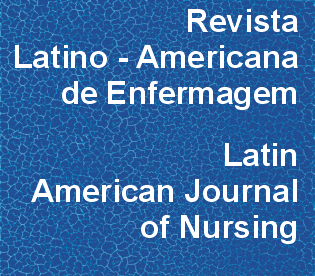Fatores associados a acidentes percutâneos na equipe de enfermagem de um hospital universitário de nível terciário
DOI:
https://doi.org/10.1590/S0104-11692008000500004Palavras-chave:
ferimentos penetrantes produzidos por agulha, fatores de risco, equipe de enfermagem, acidentes de trabalho, epidemiologia analíticaResumo
O estudo teve por objetivo identificar fatores associados aos acidentes percutâneos na equipe de enfermagem de um hospital terciário. Um estudo caso-controle foi conduzido entre janeiro de 2003 a julho de 2004, com seleção de 200 casos e 200 controles, emparelhados segundo gênero, categoria profissional e setor de trabalho. As medidas de associação utilizadas foram os odds ratios, estimados por meio da regressão logística multivariada. Seis preditores para os acidentes percutâneos foram identificados: "reencapar agulhas" (OR 9.48; CI(95%): 5.29-16.96); "jornada semanal >; 50 horas" (OR 2.47; CI(95%): 1.07-5.67); "experiência na enfermagem < 5 anos" (OR 6.70; CI(95%): 2.42-18.53); "trabalhar em jornada noturna" (OR 2.77; CI(95%): 1.35-5.70); "auto-avaliar como baixo o risco de acidentes" (OR 10.19;CI(95%): 3.67-28.32) e "acidentes percutâneos prévios" (OR 3.14; CI(95%): 1.80-5.48). Os resultados permitem a recomendação de estratégias efetivas para a prevenção de acidentes percutâneos na equipe de enfermagem de hospitais terciários.Downloads
Os dados de download ainda não estão disponíveis.
Downloads
Publicado
2008-10-01
Edição
Seção
Artigos Originais
Licença
Os direitos autorais são de propriedade exclusiva da revista, transferidos por meio da Declaração de Transferência de Direitos Autorais (presente no Formulário Individual de Declarações) assinada pelos autores. Para a utilização dos artigos, a RLAE adota a Licença Creative Commons, CC BY-NC Atribuição não comercial (resumo ou código completo da licença). Com essa licença é permitido acessar, baixar (download), copiar, imprimir, compartilhar, reutilizar e distribuir os artigos, desde que para uso não comercial e com a citação da fonte, conferindo os devidos créditos autorais a Revista Latino-Americana de Enfermagem. Nesses casos, nenhuma permissão é necessária por parte dos autores ou dos editores.Como Citar
Canini, S. R. M. da S., Moraes, S. A. de, Gir, E., & Freitas, I. C. M. (2008). Fatores associados a acidentes percutâneos na equipe de enfermagem de um hospital universitário de nível terciário. Revista Latino-Americana De Enfermagem, 16(5), 818-823. https://doi.org/10.1590/S0104-11692008000500004



